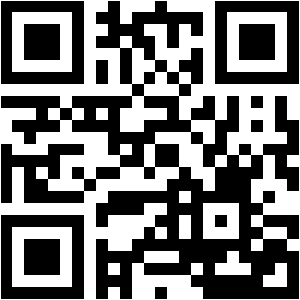| University | The University of Auckland (TUA) |
| Subject | EDCURRIC 626: Literacy |
EDCURSEC 626 Phase 2 Literacy
Unit Overview:
| Year level(s) of class: | |
| Literary Big Idea: |
Table of Contents
- Part 1: Unit Planning Overview (10 marks)
- Part 2: Text Selection (10 marks)
- Part 3: The Literary Big Idea explained (10 marks)
- Part 4: Literacy learning activity (10 marks)
- Appendix 1: Literary Big Idea options for this assignment
- Appendix 2: Phase 2 of Te Mātaiaho: English 0-6 Understand/ Know/ Do
Part 1: Unit Planning Overview (10 marks)
The aim of this section is for you to demonstrate your sophisticated knowledge of unit level planning.
For this assignment, imagine a unit that would last 2-3 weeks (the equivalent of about 8-12 literacy sessions).
LINKS TO PHASE 2 OF THE CURRICULUM:
Use the curriculum content from the Appendix to plan a unit appropriate to Phase 2 of the 2024 English Curriculum. Highlight the Teaching Strands and aspect(s) within those strands that will be the main focus of teaching and learning within the unit.
| Developing a comprehensive teaching and learning programme (p. 80-81)
A comprehensive English learning area programme needs the following components |
||||||
| Structured literacy approaches | Inclusive teaching and learning | Developing positive identities as communicators, readers, and writers | Working with texts | |||
| English Teaching Strands | ||||||
| Oral Language (p. 82-87) | Reading (p. 88-99) | Writing (p.100-115) | ||||
Communicate ideas and information
Interpersonal communication
Vocabulary and Grammar
Communication for learning
|
Word recognition and reading enrichment
Comprehension
Critical analysis
|
Transcription skills
Composition
Writing craft
Writing processes
|
||||
| Include 3 to 4 year-level phase details that will be central to learning: | ||||||
| Unit Level Learning Outcomes (see below) |
| Write at least four key learning outcomes for the unit that are clear and measurable. Include reading and writing outcomes. Ensure the learning outcomes are appropriate to the progress step in the curriculum and the year level(s) of the class. |
| By the end of this unit, students will: |
| 1. |
| 2. |
| 3. |
| 4. |
Stuck! Do not Know Assessment Answers?
Hire NZ Native Experts 24/7.
PART 2: Text Selection. (10 marks)
Identify THREE texts that will be part of your text set. Briefly justify why you have selected each of these texts to use for this unit. For each text, justify it individually and its purpose for the text set.
Support your answer with detailed reference to or examples from each text.
Consider aspects such as reading level, how it helps build knowledge of the literary big idea, student interest, relevance, and literary merit.
Ensure that you have chosen at least 2 New Zealand texts and that at least 2 of your texts are written texts.
(Write about 200 words per text and use the course materials to support your answers).
The aim of this section is for you to demonstrate your sophisticated knowledge of choosing suitable texts for a unit about a big idea in literary analysis.
| TEXT 1 | |
| Details [author, title, date of publication, page numbers if an extract, publisher; link to multimodal text if that is the text type]: | |
| Some reasons that you think that this will be an engaging text: | |
| Some features of the text that will be challenging: | |
| Reasons you have for selecting this text for this Literary Big Idea & text set: | |
| TEXT 2 | |
| Details [author, title, date of publication, page numbers if an extract, publisher; link to multimodal text if that is the text type]: | |
| Some reasons that you think that this will be an engaging text: | |
| Some features of the text that will be challenging: | |
| Reasons you have for selecting this text for this Literary Big Idea & text set: | |
| TEXT 3 | |
| Details [author, title, date of publication, page numbers if an extract, publisher; link to multimodal text if that is the text type]: | |
| Some reasons that you think that this will be an engaging text: | |
| Some features of the text that will be challenging: | |
| Reasons you have for selecting this text for this Literary Big Idea & text set: | |
Part 3: The Literary Big Idea explained (10 marks)
Choose an extract of 2-3 paragraphs from one of your three selected texts. Use this extract to explain five key features of your literary big idea.
The aim of this section is for you to demonstrate your sophisticated knowledge of the reading strand of the English curriculum and the big literary idea.
| Insert your extract in the box below | ||
| Aspect (e.g. language feature) | Example (quote from text) | Explanation of purpose in this text for my chosen literary big idea |
Part 4: Literacy learning activity (10 marks)
Design one original literacy learning activity of about 20 to 30 minutes.
The purpose of the activity is to develop students’ understanding/ knowledge of at least one important aspect of literary analysis relevant to your chosen big idea. The activity needs to be a learning activity that would occur during the unit of work not a summative/ end of unit assessment. It should be an activity that teaches students about the ideas in part 3. The task might focus on reading, writing or oral aspects of the curriculum.
The aim of this section is for you to demonstrate your sophisticated knowledge of how to design engaging and purposeful literacy learning activities in English.
| Briefly describe the explicit teaching that would have occurred prior to this activity: |
|
| LITERACY LEARNING ACTIVITY
Include detailed instructions about the activity another teacher could follow and include materials and resources if required. |
|
Buy Custom Assignment & Homework Solutions
Pay to NZ Native Writers | Cheap Cost & Plag Free
Many NZ students find literacy unit planning assignments challenging, especially designing text sets, analysing literary big ideas, and creating engaging literacy activities. If you struggle with unit planning, text selection, or curriculum-aligned teaching strategies, our experts at NZ Assignment Help provide AI-free, plagiarism-free, human-written solutions. Get support for assignments in auckland to achieve clarity, creativity, and top grades.
- LAWS390 Business Law for Māori Organisations Essay | VUW New Zealand
- Nursing Assignment 3 : Factors that Impact Registered Nurses’ Ability to Influence National Government Health Policy
- The Management and Behaviour or Pregnant Sows on Pasture Assignment 1 | Massey University (MU)
- HAS 962 Occupational Hygiene: Measurement Assessment 4 AIOH Technical Report | UOW
- IT00143 Install & Optimize Software Applications Assignment | Pacific Polytech
- Digital Tourism and Hospitality Assignment Report | Auckland University of Technology
- HEAL840 Critical Enquiry for Evidence Based Practice Additional Assessment Opportunity (AAO) Semester 1 2025
- RES903 Research Dissertation Assessment One | Nelson Marlborough Institute of Technology (NMIT)
- 71338 Managing Change Assessment 3 Strategy and Implementation Report | Open Polytechnic
- BSRV4601 Fundamentals Real Estate Assignment 1: Eligibility and licensing | Open Polytechnic (OP)


